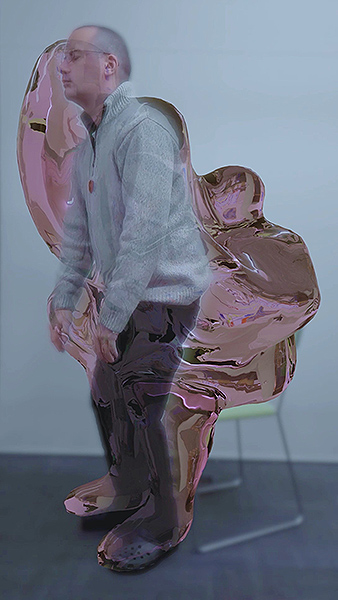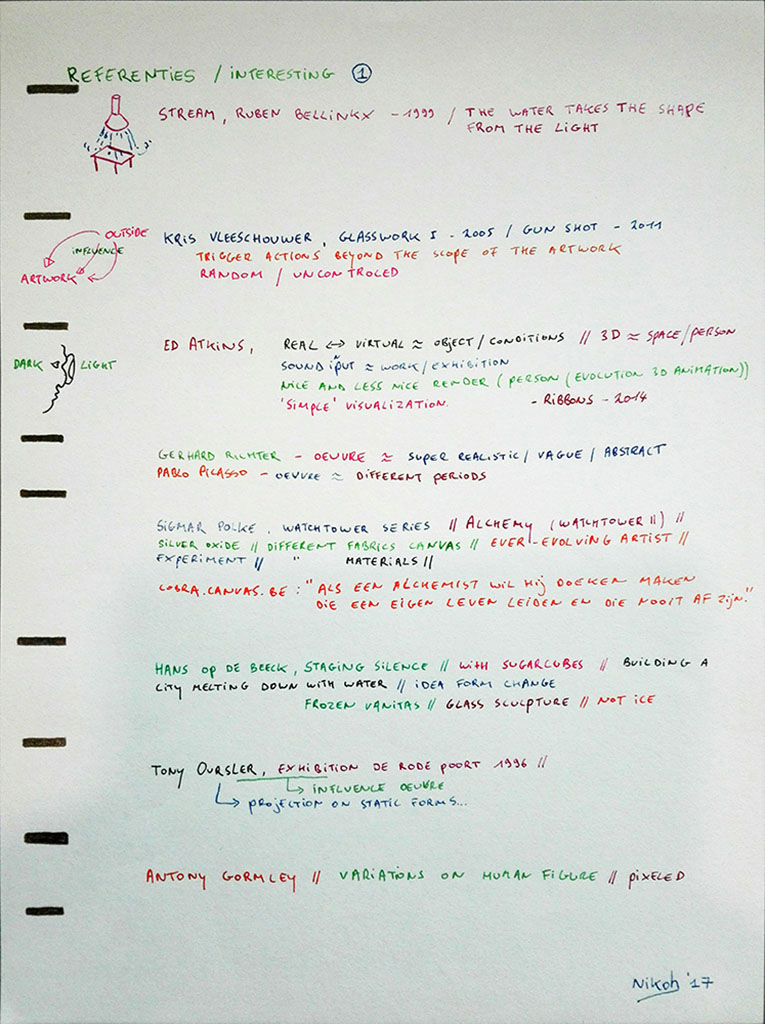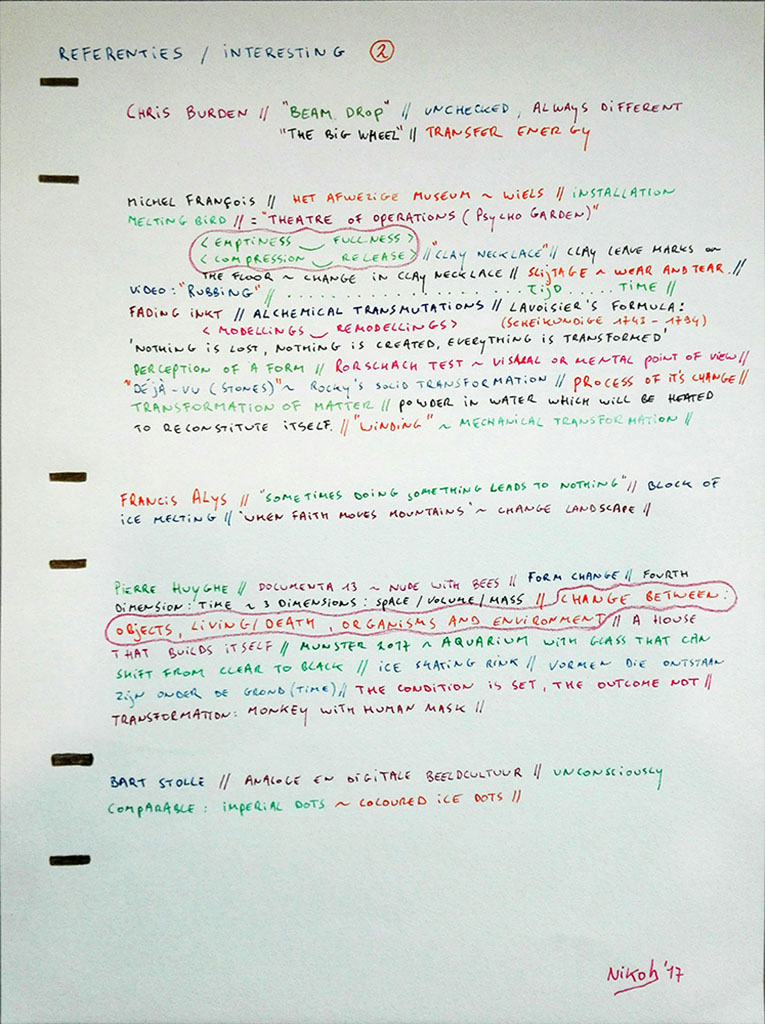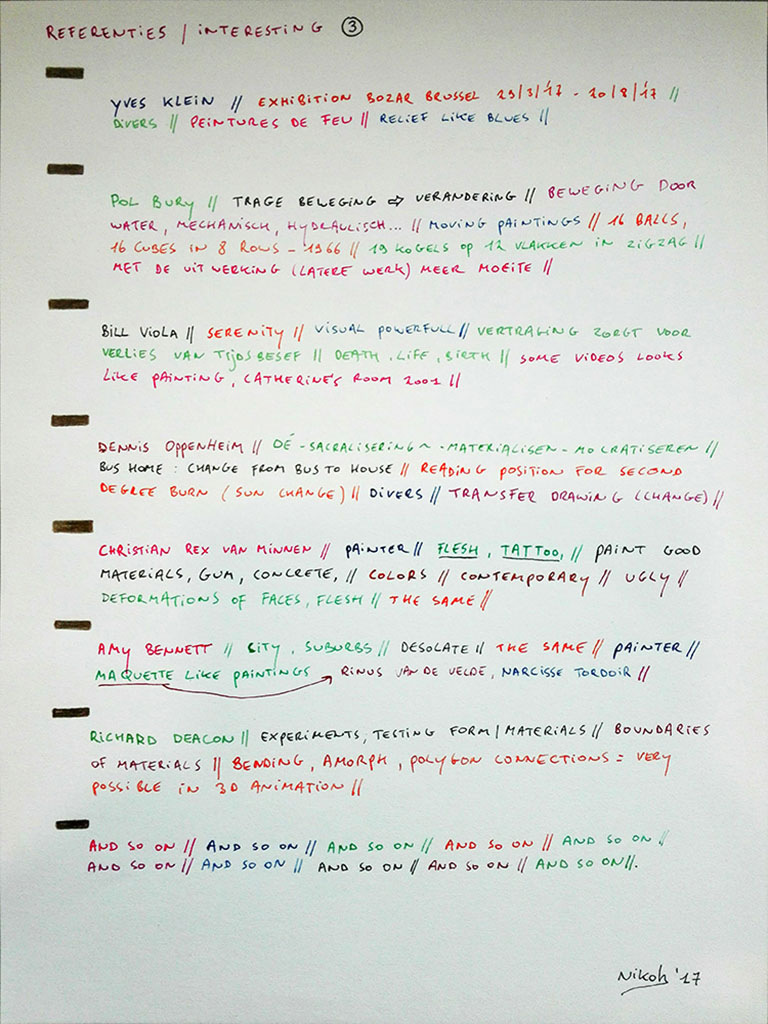 As an artist I try to create work that is dynamic. Continuous change and movement are core concepts and consequently I try to make them part of my artistic practice. ‘Transformation’ is the general concept that steers my art.
As an artist I try to create work that is dynamic. Continuous change and movement are core concepts and consequently I try to make them part of my artistic practice. ‘Transformation’ is the general concept that steers my art.
From early on in my higher art education I was convinced that ‘the idea’ must be the origin of what I create, i.e. that every idea, within itself, contains the necessity to receive the perfect artistic form. These ideas are often social subjects, but the start could just as well be an innovative or varying method, matter or technique.
In order to express these ideas, I constantly try to broaden my knowledge and develop myself as an artist, often through self-study. I never stop to further investigate, rework or complete a work of art that I have made. When the change arises from the form of the artwork, I will look for a link in its content, and vice versa.
This method often leads to a ‘double layer’ in my art. It then results in a certain esthetic formula that I will study for a while and try to perfect. The consideration that, stylewise, I have to be consistent and recognizable is not my concern.
This continuous transformation has become a general vision that I have called ‘creative dynamism’. ‘Creative’ in the sense that I make the idea the core of my art and then look for the best possible form to match it. Method, matter, theme and technique are subordinate to this. ‘Dynamism’ because I challenge myself to change and because I interpret my work as a continuously changing process.
My oeuvre is consists of seven subdivisions to which I add new creations as I go along.
- ‘Virtual transformation’: 3D animations of transforming objects and scenes which are only possible in a virtual context.
- ‘Sculptures in difference’: three-dimensional work in different materials, e.g. metals, plastics and 3D prints, sometimes completed with multimedia. Different subjects are used, such as violence, robotics, technology, death, power, metamorphoses etc.
- ‘Reconstructive acts’: three-dimensional works or paintings are broken down, reconstructed, moved etc., thus creating a dynamic change in them. 3D animations can be linked to the reconstruction.
- ‘Changing painting methods’: series of paintings with different subjects, in which I study method, style and technique, sometimes combined with video and 3D animation.
- ‘Technological transformation’: works are transformed by technology and virtually visualised, enabling later execution in reality.
- ‘Matter and deformation’: research into the use of materials to transform sculptures and paintings, sometimes combined with virtual simulations.
- ‘Drawing variations’: drawings transformed by method, style and/or content.
Below a text from 2017, in which I looked for references and works of art in which I found any element or elements of change.


